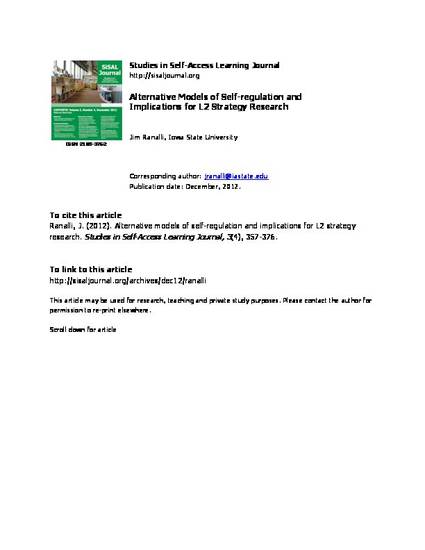
In this paper I discuss the proposal of Dörnyei and colleagues (Dörnyei, 2005; Tseng, Dörnyei, & Schmitt, 2006) to replace the construct of learning strategy with that of self-regulation and thus shift the research focus from specific strategic behaviors to a trait that is seen to underlie them. I argue that before doing so, we need a fuller understanding of what self-regulation entails and how it might intersect with traditional concerns of second language strategy research. To contribute to this understanding, I highlight alternative conceptualizations of self-regulation and then use data from my doctoral research to illustrate one in particular, the COPES model of self-regulated learning (Winne & Hadwin, 1998). This model’s explanatory power is contrasted with that of Dörnyei and colleagues’ conceptualization to show that, depending on the model one adopts, self-regulation is not only compatible with the study of specific strategies but useful for shedding new light on strategy research and integrating it with research in other related areas, such as L2 motivation.
Available at: http://works.bepress.com/jim-ranalli/2/

This article is from SiSAL Journal 3 (2012): 357. Posted with permission.